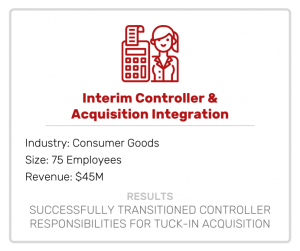
Resume formatting is an art in itself. From fonts and font sizes to margins and bullets, every formatting choice you make affects the way you present yourself to hiring managers and recruiters. And as more organizations adopt applicant tracking systems and automated resume scanning, it is more important than ever to perfect your resume formatting.
Follow these formatting best practices to revamp your resume and stand out in the job market.
You’ll want to select a font that is standard across all devices and operating systems to ensure your resume can be easily read by anyone (or any Applicant Tracking System). We recommend choosing a sans-serif font (a font without decorative lines or tails) that is easy to read and professional in nature. Here are a few of our favorites:
Keep the font size between 10 and 12 point. You can also experiment with using 12 point font for section titles and 10 point font for body text – just be sure to maintain consistency throughout the entire document.
One of the most common resume formatting mistakes candidates make is to use a very large font size for their name at the top of the page. Yes, this technically does make your name stand out, but it uses an unnecessary amount of precious resume space. Instead, use a normal font size for the heading of your resume and use the extra space to list experience and accomplishments.
Ideally, your resume should have 1″ margins on every side to prevent the document from looking busy. But if you need more space to fit in a few more lines of information, try reducing the margin size by a quarter of an inch at a time. Avoid reducing the margins below .5″ as many Applicant Tracking Systems will not read text outside of that area.
The answer to this question depends on the length of your career. If you’re just out of college or have been in the workforce for less than 5 years, then one page should be sufficient.
If your career spans beyond 5 years, you may need two pages to list your experience and accomplishments. So long as you keep your role descriptions concise, you should feel comfortable using this extra space. Just remember that most recruiters spend 7 seconds scanning a resume before deciding if the candidate is worth pursuing further. If your resume is longer than two pages, you risk losing their attention in that 7 second window.
PDF files maintain resume formatting, ensuring the colors, fonts, and other style choices you made are protected from device to device. Word files, however, can change the spacing and styling to fit the reader’s default settings. PDF files can be difficult for Applicant Tracking Systems to read, and they are not easily editable for recruiters to make small tweaks before presenting you for a job. Word is almost universally accepted and easy to use.
Both formats have their pros and cons. Our recommendation? Keep a current version of your resume in both PDF and Word. Preview the files on a desktop and on a phone to make sure the formatting looks clean and professional across all devices.
Many hiring managers and recruiters prefer to read about your experience in reverse chronological order. In other words, list your most recent experience first and your oldest experience last. This shows your career progression and illustrates how you’ve taken on greater responsibilities over time.
Use section headers to allow a hiring manager to easily find the content they are looking for. Here are the most important sections to include, in the order they should be listed:
Now that you’ve updated your resume, you’re ready to enter the job market. Click here to view our latest job openings, and follow us on LinkedIn to stay connected.